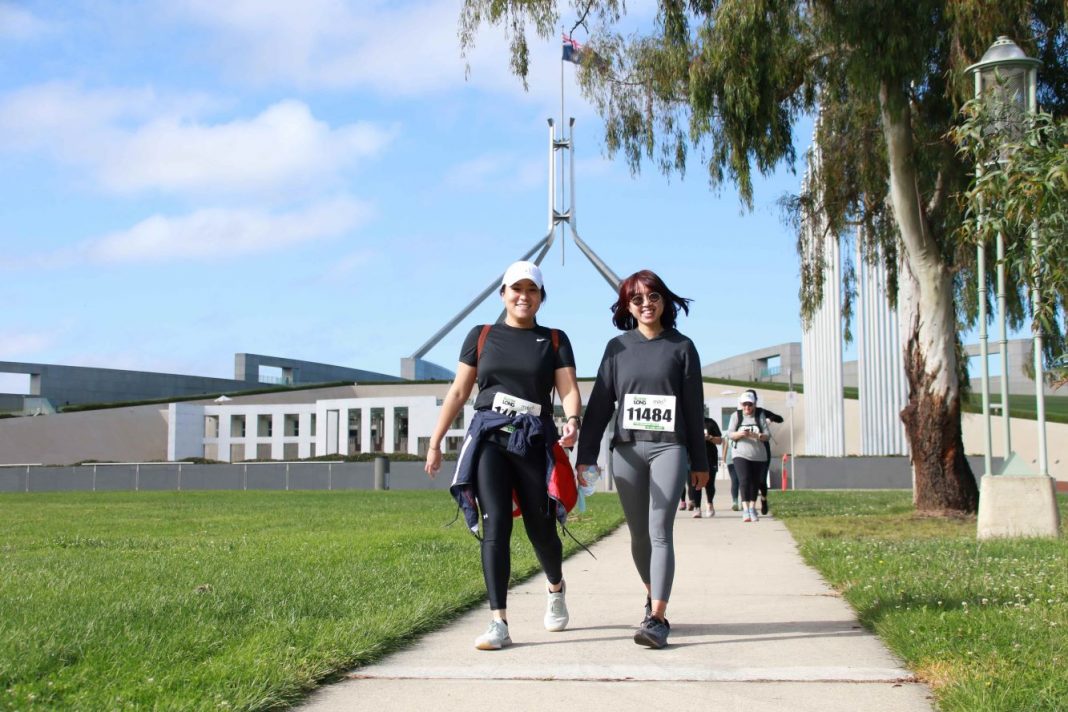Every week, an Australian child is born with a severe or life-threatening form of mitochondrial disease (mito), a debilitating genetic disorder that robs the body’s cells of energy, causing single or multiple organ dysfunction or failure, and potentially death.
It is one of the most commonly diagnosed serious genetic diseases, affecting one in 4,300 people. According to the Australian Government, between one in 5,000 and one in 10,000 Australians develop severe mitochondrial disease during their lifetime.
But the disease is terminal: there are no cures, and few effective treatments.
To raise funds for the Mito Foundation, nearly 800 Canberrans will walk 35 km from Red Hill Lookout to Reconciliation Place this Sunday, 12 November.
Sunday marks the eighth time The Bloody Long Walk has taken place in Canberra, and residents have already raised more than $79,000, with a goal of reaching $200,000.
The walk passes Lake Burley Griffin and some of the city’s iconic buildings, including Parliament House and the Australian War Memorial. (A course map can be found here.)
Participants will walk for more than seven hours, clocking up nearly 47,000 steps, all in support of raising funds and awareness for the Mito Foundation and its goal to end mito.
Among the walkers will be Bailey Walsh, who walks for his wife Bec and all other ‘mito warriors’. This will be Mr Walsh’s 10th Bloody Long Walk this year alone – he plans to complete all 11.
The event is part of a nationwide initiative that supports families affected by mito, Mito Foundation CEO Sean Murray said.
Walkers had extra inspiration to take on the 35 km challenge in 2023: clinical trials will soon be underway in Australia for women with certain forms of mito to have healthy children. This follows the passing of the Mitochondrial Donation Law Reform (Maeve’s Law) Act 2022, which allows the use of mitochondrial donation to prevent transmission of severe mitochondrial disease.
The Mito Foundation supports people affected by mitochondrial disease; funds essential research into the prevention, diagnosis, treatment, and cures of mitochondrial disorders; and increases awareness and education about this devastating disease.
“There is so much more work to be done,” Mr Murray said.
“Diagnosis is key to prevention strategies such as mitochondrial donation, and while progress has been made, we are working to improve diagnosis rates through research and advocacy.”
One in 200 people, or more than 120,000 Australians, may carry the genetic change that puts them at risk of developing mito or passing it on to their children. Many of these people are symptomatic but undiagnosed or misdiagnosed; some are not yet symptomatic; and some are unknowingly at risk of passing the disease on to their children.
About 70 Australian children develop a life-threatening form of mito every year.
“There is no cure for mito, and children born with the condition generally live to about the age of five,” Mr Murray said. “Our ambition is to prevent as many children as possible from suffering from this life-threatening disease, and to reduce the burden of mito on families and the community.”
For more information about The Bloody Long Walk, to share your support, or contribute a donation, go to bloodylongwalk.com.au/canberra/
Canberra Daily is keen to hear from you about a story idea in the Canberra and surrounding region. Click here to submit a news tip.



